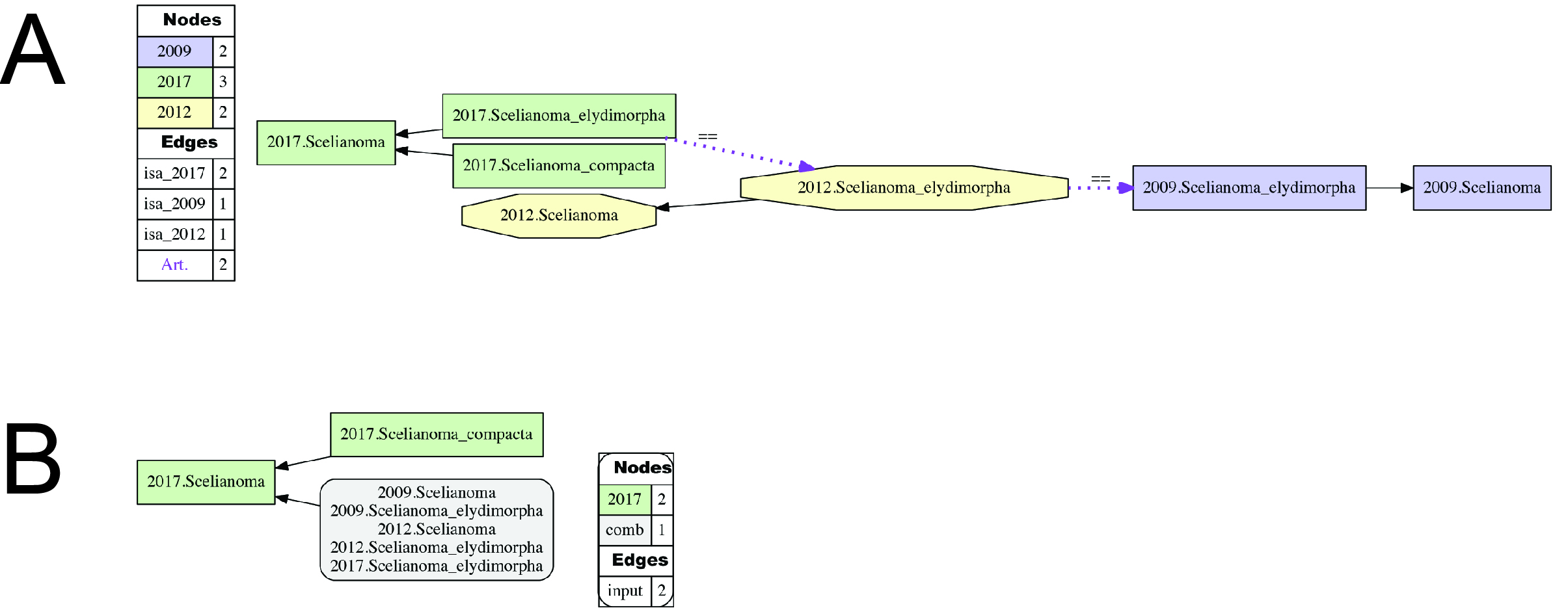| |
(A) Input visualization and (B) alignment visualization for the taxonomic concept alignment of Scelianoma Franz and Girón 2009 sec. auctorum. See also Suppl. materials 2, 3, 4, 5. In this and in succeeding visualizations, we use the convention "2012.Scelianoma" (etc.) to abbreviate the taxonomic concept label Scelianoma Franz and Girón 2009 sec. Franz (2012). In the input visualization (A), given parent-child relationships within a single taxonomy are symbolized with solid black arrows, whereas provided RCC-5 articulations are shown with dashed magenta arrows. The symbols used for expert-provided RCC-5 articulations are: == for congruence, > for proper inclusion, < for inverse proper inclusion, >< for overlap, and ! for exclusion. Taxonomic concepts are color-coded in the input visualizations to reflect their unique sources of authorship; whereas in the alignment visualizations they retain these colors only if they are (also) taxonomically unique, i.e., not congruent with other taxonomic concepts. Multiple congruence taxonomic concepts are represented in grey rectangles with rounded corners. In this particular alignment visualization (B), only solid black arrows appear, indicating proper inclusion that was inferred through an early-stage reasoning process. In other alignment visualizations, red solid arrows indicate proper inclusion that was inferred through a late-state reasoning process, and dashed blue lines significant overlap.
|
|

